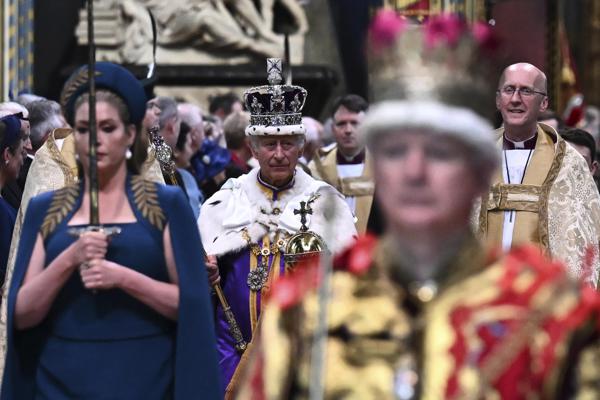London (Reuters) – King Charles III coronation took place in Westminster Abbey, steeped in ancient ritual and radiant.
As a display of royal power dating back to the Middle Ages, Charles was presented with an orb, a sword and a scepter, and while seated in his 700-year-old oak coronation chair.
Prince Charles addressed world leaders, foreign royalty, British aristocrats and stars by declaring:
“I did not come to be served, I came to serve.” Trumpets sounded in a medieval monastery, and a congregation of over 2,000 cried out, “God save the King!” .
It was the culmination of his 70-year journey from heir to the throne to monarch.
For the royal family and government, the occasion, codenamed Operation Golden Orb, demonstrated a heritage, tradition and spectacle unparalleled anywhere in the world. Thousands of people had camped overnight for crowds gathered under rainy skies, an opportunity to participate in a historic event.
But for millions more, the day was greeted with a shrug, and the sense of awe and reverence the ceremony was supposed to inspire has all but disappeared.
And for some, it was a cause for protest. Hundreds of people who wanted Britain to become a republic gathered and shouted, “Not my king.” , sees it as an institution of privilege and inequality in a country where poverty is increasing and social ties are severed.
As the day began, the abbey buzzed with excitement and was abloom with fragrant flowers and colorful hats. Among the dignitaries and notables who streamed in were U.S. First Lady Jill Biden, First Lady Olena Zelenska of Ukraine, French President Emmanuel Macron, eight current and former British prime ministers, judges in wigs, soldiers with gleaming medals, and celebrities including Judi Dench, Emma Thompson and Lionel Richie.
During the traditional Anglican service slightly tweaked for modern times, Charles, clad in crimson and cream velvet and ermine-trimmed robes, swore on a Bible that he is a “true Protestant.”
But a preface was added to the coronation oath to say the Anglican church “will seek to foster an environment where people of all faiths and beliefs may live freely.” It was the first ceremony to include representatives of the Buddhist, Hindu, Jewish, Muslim, and Sikh faiths, as well as the first in which female clergy took part.
Charles was anointed with oil from the Mount of Olives in the Holy Land — a part of the ceremony so sacred it was concealed behind screens — before being presented with the Sovereign’s Orb and other regalia.
Archbishop of Canterbury Justin Welby then placed the crown on Charles’ head, while he sat in the Coronation Chair — once gilded, now worn and etched with graffiti. Underneath the seat was a sacred slab known as the Stone of Scone, upon which an ancient Scottish king was crowned.
Friday, December 5, 2025
More
© London Post, All Rights Reserved by Independent Media Group UK Limited.






